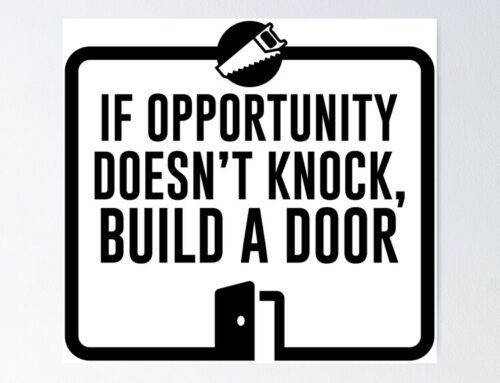The Step-by-Step Guide to Building an Effective Sales Strategy
In construction, it’s impossible to erect a building if you don’t have one critical document — a blueprint. Steel frames, power tools, and a team of builders are all important elements, but they’re useless if you don’t have a document to guide the process.
Like a blueprint is essential for constructing buildings, you need a strategy as a manager to build a successful sales department — a step-by-step plan to help you and your team drive company revenue. In this post, we’ll break down what a sales strategy actually is and how you can create your own.
What is a sales strategy?
A sales strategy is a detailed written plan on how your team will target customers to sell more products. It shows your desired sales goals and details how operations will be carried out to meet these objectives.
Instead of your team making decisions on the fly, a sales strategy keeps everyone on task and the long-term vision in mind. It should be comprehensive, well-researched, and actionable for your sales team to work from.
How to create a sales strategy
While creating a sales strategy takes a lot of research and analysis upfront, it’s a necessary document for both you and your sales team. The end result should give you a clear blueprint to follow, so you can grow and sustain sales for your company.
Build a sales strategy for you and your team by following these five key steps:
- Identifying sales goals
- Nailing down your market fit
- Building customer personas
- Highlighting opportunities for improvement in the customer journey
- Outlining an action plan
Follow the steps below to create a sales strategy of your own!

1. Identify sales goals
Before you can effectively sell your product or service, you need a vision of what you’re trying to accomplish for your company. This is where sales goals come in. They give direction to your entire sales strategy as a guiding light for your team to work towards.
Here are a few ways to set realistic and achievable sales goals:
- Assess your company resources. Before setting lofty sales goals, think about what resources your sales department has and how they could help or hinder your team from reaching their targets. Will you need to hire more salespeople? Do you have the tools, such as a CRM, to quickly move leads through the sales pipeline? Make sure your operations are positioned to succeed.
- Review past sales’ customer data to create reasonable goals for the upcoming year. Maybe a significant amount of customers churned last year, so your goal is to improve retention. Use this data to determine goals that are both realistic and useful for your sales team.
- Use the S.M.A.R.T. model — specific, measurable, achievable, relevant, and time-bound — to set actionable goals. Examples of S.M.A.R.T. goals could be “Increase deal size by 35% through upsells” or “Achieve $1 million in sales during 2020.”
Once your overall sales goals are set, work backwards. Set realistic short-term deadlines for the steps your sales department and reps must take to ensure that final goals are reached. For example, if an overall sales goal is to “Increase customer retention rate by 50% during Q4,” a short-term team goal could be “Increase customer check-ins by 15% per month.” Breaking down overall goals into smaller weekly or monthly objectives will make them feel more approachable for your team to complete.
2. Nail down your market fit
Understanding how your brand fits in its market is essential in sales. If you can’t articulate your brand’s unique value, it’s unlikely that you can persuasively sell your product or service.
One way to identify how you fit in your market is to create a SWOT (Strengths, Weaknesses, Opportunities, & Threats) analysis. This information will help you review your current market position. Here are a few questions you might answer when following this model:
- What specific need does our product/service solve in our target market?
- What is our value proposition?
- What internal and external obstacles for our sales department could stop us from achieving our goals?
Use your SWOT analysis to understand what opportunities you can leverage and what threats might hinder your sales team from effectively selling your product or service in your target market. You also might complete a SWOT analysis for each one of your competitors. Review what they’re doing well (and not doing well) to identify opportunities where you can outperform.
3. Build customer personas
You understand your target market. Now break it down even further into buyer personas — fictitious profiles that give a picture of your ideal customer and why they want your product or service. A buyer persona should include the following information:
- A fictitious name and title such as “Dana Matthews, CPA”
- The person’s industry, age, salary, and education
- Their goals and challenges
- How your value proposition aligns with this customer’s wants/needs
To create buyer persona profiles, first divide your customers into segments based on shared characteristics. For example, you might group buyers by the industry they work in or where they live. For each of these segments, create a single buyer persona profile with the details mentioned above.
Work closely with your marketing team on this project — after all, they’re also bringing in leads and need to be on the same page as to what constitutes qualified ones. Personas should be referred to regularly by sales reps and marketing team members to ensure that they’re prospecting the right people.
Armed with this information, you’ll know which customers are the most valuable to target, attract, and retain.
4. Identify opportunities for improvement in the customer journey
Look closely at how customers are currently moving from being prospects to making a purchase. If you understand this journey, you’re able to determine efficient ways to convert customers in the coming year. Here are a few ways to identify opportunities for improvements:
- Talk with current customers about their interactions with your brand and what they appreciated or disliked. Are reps pushing a sale or focused on the customer relationship? Do customers feel neglected after the sale has been made? Find this information through informal conversations or surveys.
- Determine what drives (or hampers) purchases. Ask current or even prospective customers about obstacles to purchase. Is budget a common factor? Or is your product difficult to understand? You might need to include more affordable package options or coach your reps in explaining how your product/service works.
- Review your competitors’ customer journeys. What methods are competitors using to capture their attention? What platforms do they use to nurture the customer relationship? Research their website content, social media platforms, and customer reviews. All of this information will help guide your own sales tactics.
By knowing the specific journey that your customers are taking and what they like or dislike about the process, your sales team will be better equipped to serve them and achieve the company’s sales goals.
5. Outline an action plan
You know what you want your reps to achieve — now help them get there. This is where an action plan within your sales strategy comes into play. To build this plan, use the research you completed in steps 2 through 4 to define the tasks reps need to follow to meet the goals you set in step 1.
The tasks that you outline for your reps are going to be unique to your team and the research you did prior to this step. With that said, here are a few examples of customer acquisition and retention tasks you might set for your team:
- Generate leads through social selling. Reach prospects by answering questions on Quora or participate in LinkedIn groups related to your industry. Provide value on these platforms and build relationships with those you meet.
- Source leads from support ticket conversations. Source important leads that typically fall through the cracks by integrating support tickets within your CRM, so reps can see the questions customers are asking and determine who would benefit from your product/service.
- Go for the upsell. If your company is proving your value to customers, don’t be afraid to suggest an upgrade to the customer. Highlight the benefits that your product or service is already bringing to the table and how additional features could help.
- Ask for referrals from current customers. Reach out to current satisfied customers and ask if they would be willing to provide a referral. Target the top 20% of your customers and ask for an introduction to similar companies.
By setting an action plan, you ensure that your entire team is on track to meet your company’s sales goals.
Now that you’ve built your sales strategy, execute it!
Your sales strategy might be written, but you and your sales team are just getting started. It’s time to put your strategy into action. Here are ways to do just that:
- Introduce the strategy to your sales team. Create a sales strategy presentation and share the goals, customer and market research, and action plan that you created in steps 1-5. Provide context on why certain sales goals were chosen, what’s expected for the year, and the sales activities reps will use to accomplish these goals. Highlight the benefits of the strategy and the rewards possible for those who follow it.
- Meet regularly to check progress. In addition to informal weekly discussions, have monthly or quarterly check-ins to determine if your set goals aren’t being met. Pinpoint skills that reps could improve to help the team meet their objectives.
- Re-evaluate and revise your action plan as needed. When your business grows, your sales strategy needs to grow with it. Luckily, your sales strategy can be updated and revised as needed. Go through steps 1-5 once a year to make updates. Also check your sales goals on a regular basis and change course with sales tasks if goals aren’t being met.
Don’t get close to the end of the year only to discover that you’re far off the mark for meeting sales goals. Assess successes and failures on a regular basis and revise your sales strategy accordingly.
Build your own sales strategy today
A sales strategy ensures that you and your team know what you’re collectively working towards to attract more customers and boost revenue. Following the above steps, you’ll be well on your way to building a thoughtful sales strategy for your team.
Author Josh Bean

206-391-5682
i2i@i2idirectmarketing.com
www.i2idirectmarketing.com
“…all deliveries GPS tracked…”




